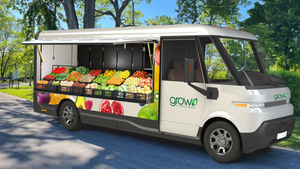Perfecting pack sizes and price points
In consumers’ minds, not all grocery departments are created equal—and that’s good news for the fresh perimeter, says IRI’s Jonna Parker.
October 20, 2022

As food-at-home inflation crept toward, and then passed 10% earlier this year, industry analysts anxiously watched for signs that consumers were moving their purchases toward the middle (or back) of the store—swapping out bags of microwave-ready fresh veggies for frozen or canned alternatives, for example. But department-to-department shifts didn’t materialize the way some may have anticipated, according to Parker.
“When we looked at that throughout the year, the people who preferred to buy canned kept buying canned, and the people who preferred to buy fresh kept buying fresh,” she says.
That’s not to say that consumers’ buying behaviors in the fresh department were unchanged. “(Consumers) weren’t buying the same volumes—they were waiting for sales,” Parker notes. Indeed, for the past year, volume and unit sales in fresh categories such as meat, where poultry prices were up nearly 16% year over year in August, have slid as consumers scale back purchase quantities in an effort to keep their overall spend in check. And when consumers need a particular fresh item, they’re increasingly inclined to opt for a private-label option, regardless of their income level. (They’re likely to have even more choices in this arena in 2023, too: 83% of retailers surveyed for FMI – The Food Industry Association’s latest SPEAKS survey said they plan to moderately or significantly increase their investment in private brands in the year ahead.)
But trading from fresh to a frozen or shelf-stable version? Not happening, says Parker. “Consumers don’t necessarily see different parts of the store as being equal to each other,” she says. From a department standpoint, says Parker, “You prefer to buy from where you usually buy.”
With inflation continuing to run hot, better meeting consumers’ needs in fresh means offering options in the pack sizes that shoppers need to hit the price points they’re looking for.
“That idea of stocking up and freezing fresh isn’t high on everyone’s list,” Parker says. “If (it’s) an empty-nester or a two-person household and they just ate through all of their freezer meat, they don’t necessarily want to freeze a bunch of meat again,” she says. And food waste is high on consumers’ radar from a financial as well as an environmental perspective. In the past year, “Not wasting what you’re spending more on became a huge priority for American consumers of all income levels,” says Parker.
You May Also Like




